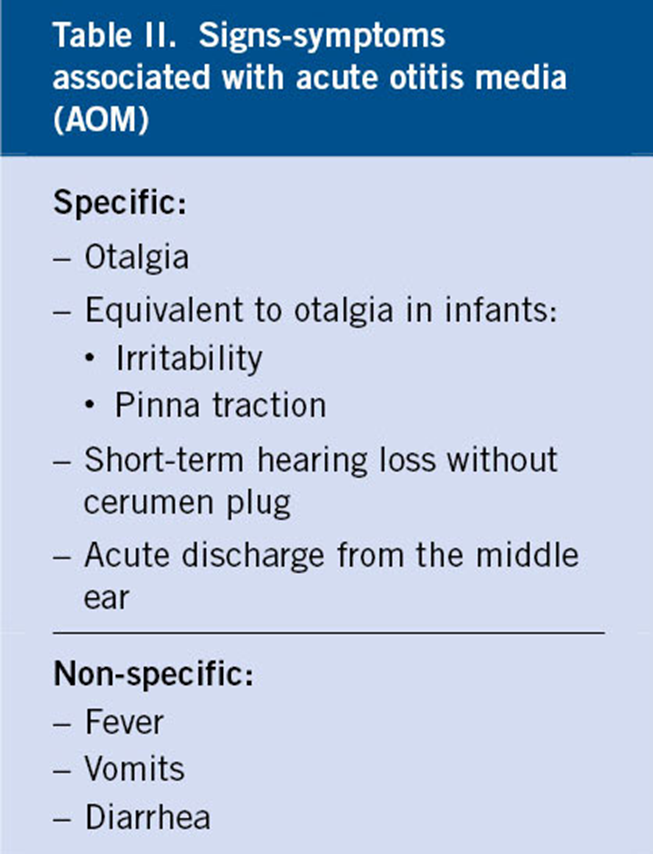A nurse is collecting data from an infant who has otitis media. The nurse should expect which of the following findings?
Increase in appetite
Tugging on the affected ear lobe
Erythema and edema of the affected auricle
Bluish-green discharge from the ear canal
The Correct Answer is B
A. Increase in appetite: Otitis media, an infection or inflammation of the middle ear, typically causes discomfort and pain in infants. As a result, they may experience a decrease in appetite rather than an increase.
B. Tugging on the affected ear lobe: Tugging or pulling on the affected ear lobe is a common sign of ear pain in infants with otitis media. It occurs because the pain from the middle ear extends to the outer ear canal.
C. Erythema and edema of the affected auricle: Otitis media primarily affects the middle ear, so erythema (redness) and edema (swelling) are not typically observed on the outer ear (auricle). Instead, these symptoms are more commonly seen in external ear infections, such as otitis externa.
D. Bluish-green discharge from the ear canal: Bluish-green discharge from the ear canal is not a typical finding in otitis media. It may suggest a secondary bacterial infection or another underlying condition, but it is not a characteristic feature of otitis media.

Nursing Test Bank
Naxlex Comprehensive Predictor Exams
Related Questions
Correct Answer is C
Explanation
A. Barley:
Barley is a grain that contains gluten. Foods made from barley, such as barley flour or barley-based products like bread, cereal, or beer, should be avoided by individuals with celiac disease because gluten can trigger an immune response that damages the small intestine.
B. Rye:
Similar to barley, rye is another grain that contains gluten. Foods made from rye, such as rye bread or rye-based cereals, should also be avoided by individuals with celiac disease because they can trigger adverse reactions due to gluten.
C. Rice:
Rice is a gluten-free grain and is safe for individuals with celiac disease to consume. It does not contain gluten proteins that can cause intestinal damage or trigger immune responses in those with gluten sensitivity or celiac disease.
D. Wheat:
Wheat is a major source of gluten and should be strictly avoided by individuals with celiac disease. Foods made from wheat, such as wheat bread, pasta, or baked goods, can lead to symptoms and intestinal damage in individuals with gluten intolerance or celiac disease.
Correct Answer is D
Explanation
A. Monitor the client's hemoglobin level: Monitoring the client's hemoglobin level is not relevant during a seizure. Seizures typically do not directly affect hemoglobin levels, so this action is not appropriate.
B. Restrain the client's extremities: Restraint is generally not recommended during a seizure unless absolutely necessary for the safety of the client or others. Restraint can potentially cause injury to the client and increase agitation during the seizure.
C. Place the client in a prone position: Placing the client in a prone (face-down) position during a seizure is not recommended. This position may increase the risk of airway obstruction and compromise the client's ability to breathe effectively.
D. Record the time and length of the seizure: This is the correct answer. During a seizure, the nurse should prioritize ensuring the safety of the client and others. After ensuring safety, the nurse should document important details about the seizure, including the time it began and ended, as well as any observed symptoms or behaviors. This documentation can provide valuable information for the client's healthcare team and help guide future treatment decisions.
Whether you are a student looking to ace your exams or a practicing nurse seeking to enhance your expertise , our nursing education contents will empower you with the confidence and competence to make a difference in the lives of patients and become a respected leader in the healthcare field.
Visit Naxlex, invest in your future and unlock endless possibilities with our unparalleled nursing education contents today
Report Wrong Answer on the Current Question
Do you disagree with the answer? If yes, what is your expected answer? Explain.
Kindly be descriptive with the issue you are facing.
